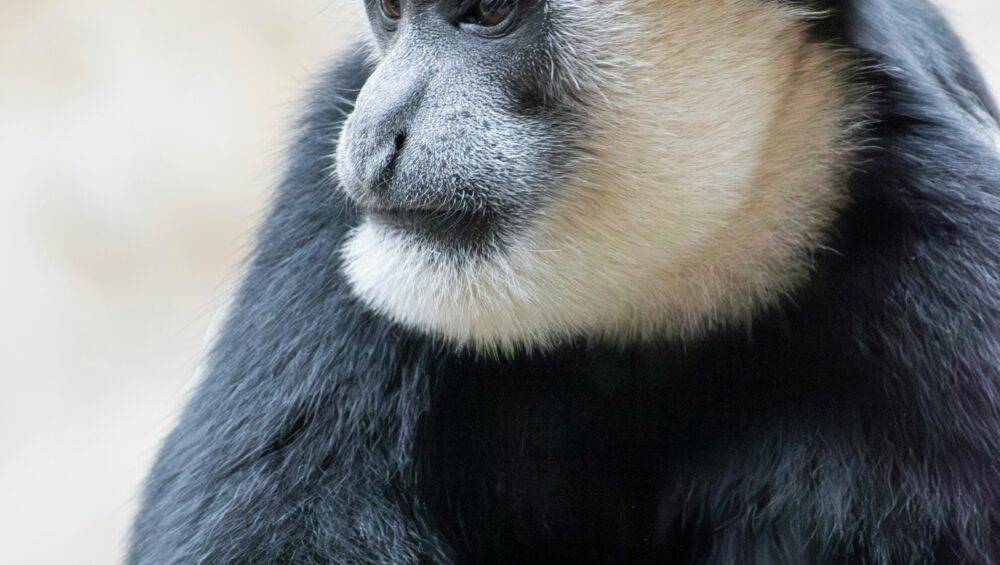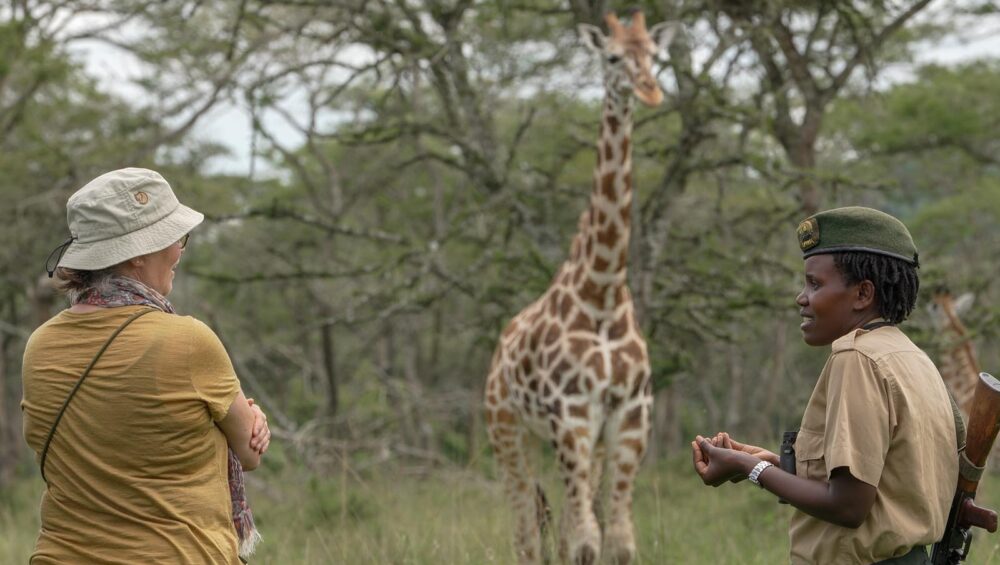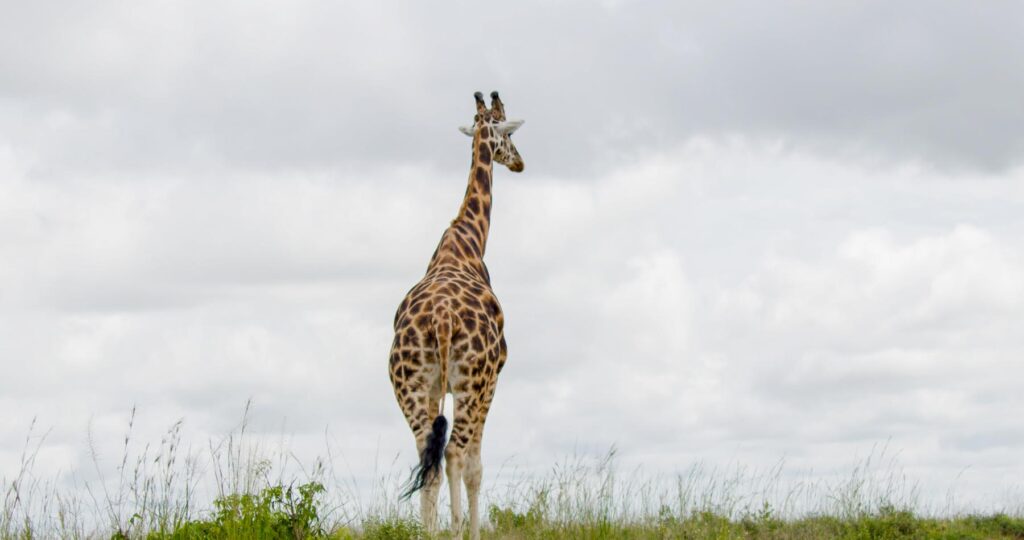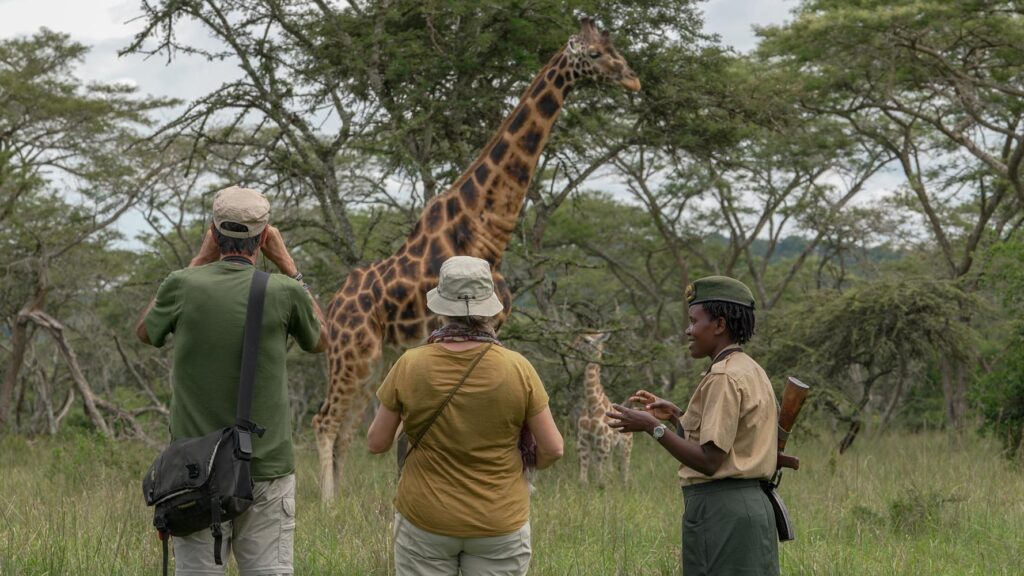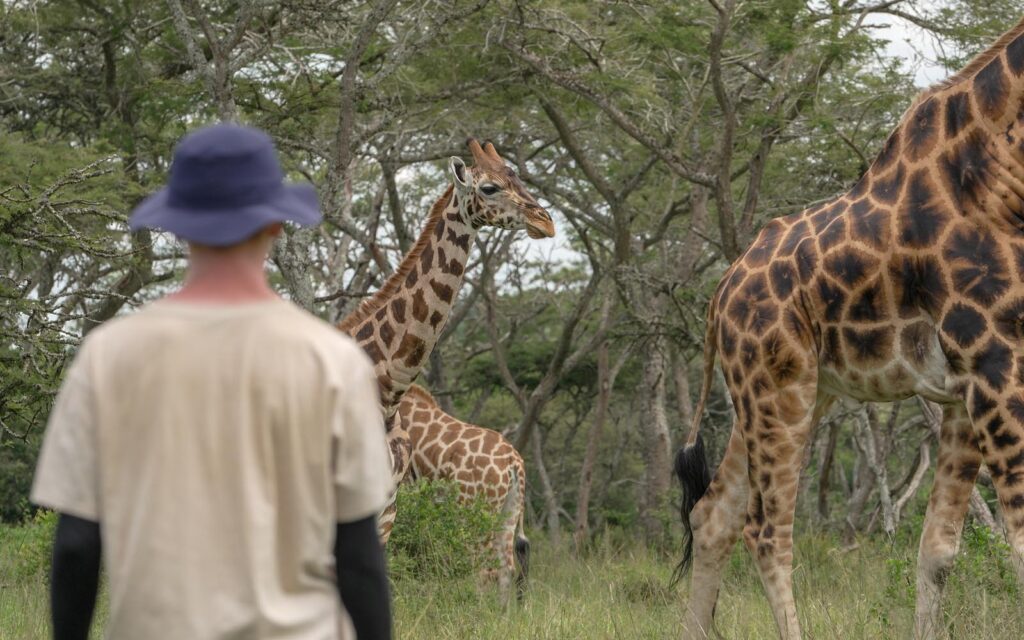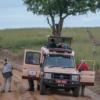How to Track Black-and-White Colobus in Uganda
If you’re looking for where to track black-and-white colobus in Uganda, you’re in the right place! If you’re an avid wildlife enthusiast or simply someone who appreciates the beauty of nature, then you’re in for a treat. Uganda is home to a diverse range of wildlife, including the magnificent black-and-white colobus monkeys.
In this post, we’ll get into the basics of black-and-white colobus, including their habitat and behavior. We’ll also provide you with essential tips and tools to help you track and identify these fascinating creatures in the wild. But before we get started, let’s first familiarize ourselves with the basics of black-and-white colobus.
Black-and-white colobus monkeys, scientifically known as Colobus guereza, are a species of Old World monkeys found in various parts of Africa. In Uganda, they inhabit lush forests and can be spotted in specific regions. Understanding their preferred habitats and ideal times for spotting them is crucial for a successful tracking experience.
Identifying black-and-white colobus monkeys can be an exciting challenge. Their physical characteristics, such as their distinctive black and white fur and long, elegant tails, make them easily recognizable. Additionally, their behavioral patterns, unique sounds, and calls set them apart from other primates.
To embark on a successful tracking expedition, you’ll need some essential tools. Binoculars and camera equipment will allow you to observe these monkeys from a safe distance and capture incredible photos. Understanding the weather and terrain of their habitat is also crucial for planning your tracking adventure. Don’t forget to equip yourself with safety gear and appropriate clothing to ensure a comfortable and safe experience.
Join us as we explore the world of black-and-white colobus monkeys and uncover the secrets of tracking them in Uganda. Whether you’re planning a trip or simply intrigued by these unique primates, this blog post will provide you with valuable insights and tips to make your tracking experience a memorable one. So, let’s dive in and discover the wonders of tracking black-and-white colobus in Uganda!
Understanding the Basics: Introduction to Black-and-White Colobus
Black-and-white colobus monkeys are fascinating creatures that captivate the hearts of nature enthusiasts worldwide. In this section, we will delve into the basics of black-and-white colobus, providing you with a comprehensive introduction to these remarkable primates.
Black-and-white colobus monkeys, scientifically known as Colobus guereza, belong to the family Cercopithecidae, which includes Old World monkeys. They are primarily found in various parts of Africa, including Uganda. These monkeys are known for their striking appearance, with a contrasting black and white fur pattern that sets them apart from other primates.
One of the distinguishing features of black-and-white colobus monkeys is their long, elegant tails, which can measure up to two-thirds of their total body length. These tails serve as an excellent tool for balancing and navigating through the dense forest canopies where they dwell.
In terms of size, adult males typically reach a length of around 50-80 centimeters (20-31 inches), excluding their tails, while females are slightly smaller. These monkeys have a slender build, allowing them to move swiftly and gracefully through the trees.
Black-and-white colobus monkeys are herbivores, primarily feeding on a diet of leaves, fruits, flowers, and occasionally, seeds. Their specialized stomachs enable them to efficiently digest the fibrous plant material they consume. This diet provides them with the necessary nutrients to thrive in their natural habitat.
These primates are highly social animals, living in groups called troops. Troops can consist of anywhere from 5 to 50 individuals, depending on factors such as food availability and habitat size. Within these troops, there is a complex social structure, with dominant males leading the group and females playing vital roles in caregiving and maintaining social bonds.
Communication among black-and-white colobus monkeys is primarily non-vocal, relying on a variety of visual signals and body language. They use gestures, facial expressions, and body postures to convey messages to other members of their troop. Additionally, they have unique sounds and calls, including a distinctive high-pitched wailing vocalization that can be heard echoing through the forest.
These monkeys are primarily arboreal, spending most of their time high up in the forest canopy. Their adept climbing and leaping abilities allow them to navigate through the treetops with ease. However, they are also known to descend to the ground occasionally, particularly when searching for food or crossing open spaces.
Now that we have covered the basics of black-and-white colobus monkeys, including their appearance, diet, social structure, and behavior, we can move on to the next section. In the following section, we will explore the specific habitats in Uganda where you can find these majestic creatures.
Where to Find Black-and-White Colobus in Uganda
Uganda is a country blessed with diverse and rich wildlife, making it an ideal destination for tracking black-and-white colobus monkeys. In this section, we will explore the key habitats in Uganda where you can find these magnificent primates and provide insights into the ideal times for spotting them.
Key Habitats in Uganda
- Kibale National Park: Located in western Uganda, Kibale National Park is renowned for its exceptional primate diversity. It is home to one of the largest populations of black-and-white colobus monkeys in the country. The park encompasses a vast tract of tropical rainforest, providing an ideal habitat for these primates. Exploring the trails and canopy walkways within Kibale National Park offers an excellent opportunity to observe and track black-and-white colobus monkeys in their natural environment.
- Bwindi Impenetrable National Park: Famous for its population of critically endangered mountain gorillas, Bwindi Impenetrable National Park is also a habitat for black-and-white colobus monkeys. Situated in southwestern Uganda, this UNESCO World Heritage Site features dense forest cover, creating a suitable habitat for a variety of primates. Tracking these monkeys in Bwindi Impenetrable National Park is a unique experience that allows you to witness the incredible biodiversity of the area.
- Queen Elizabeth National Park: Located in southwestern Uganda, Queen Elizabeth National Park is one of the country’s most visited wildlife reserves. This diverse park is home to a wide range of wildlife, including black-and-white colobus monkeys. The Ishasha sector of the park, known for its tree-climbing lions, is an excellent area to spot these monkeys as they move through the forest canopies.
Ideal Times for Spotting
The best times to spot black-and-white colobus monkeys in Uganda are during the dry seasons, which typically occur from December to February and from June to September. During these periods, the forest vegetation is less dense, making it easier to observe and track these primates. Additionally, the temperate weather conditions during these seasons provide a comfortable environment for both the trackers and the monkeys.
It is important to note that while these dry seasons offer favorable conditions for tracking, black-and-white colobus monkeys can be spotted throughout the year. However, during the rainy seasons, which usually fall from March to May and from October to November, the dense foliage and occasional downpours might make tracking more challenging.
To maximize your chances of spotting these monkeys, it is recommended to plan your tracking activities during the early morning or late afternoon. During these times, the monkeys are more active and are often found foraging or moving within their troop.
Now that you are familiar with the key habitats in Uganda where black-and-white colobus monkeys can be found and the ideal times for spotting them, we can move on to the next section. In the following section, we will discuss the importance of respecting and preserving their natural habitats to ensure their long-term survival.
How to Identify Black-and-White Colobus
Identifying black-and-white colobus monkeys is an essential skill for successful tracking and observation. In this section, we will explore the physical characteristics, behavioral patterns, and unique sounds and calls that can help you identify these remarkable primates.
Physical Characteristics
- Fur Coloration: As the name suggests, black-and-white colobus monkeys have a distinct black and white coloration. Their body is predominantly covered in black fur, while their face, hands, and tail have striking white markings. This stark contrast in colors makes them easily recognizable in the dense forest canopy.
Long Tails: Black-and-white colobus monkeys have long, bushy tails that can measure up to two-thirds of their body length. These tails are not only aesthetically appealing but also serve as an excellent adaptation for balance and arboreal locomotion.
Slender Build: These monkeys have a slender build, allowing them to move swiftly and gracefully through the trees. Their lightweight bodies and long limbs enable them to navigate the forest canopies with agility.
Behavioral Patterns
- Arboreal Lifestyle: Black-and-white colobus monkeys are primarily arboreal, spending most of their time in the forest canopy. They are adept climbers and leapers, using their long limbs and powerful muscles to move through the trees with ease.
Group Dynamics: These monkeys live in troops consisting of several individuals. They exhibit a complex social structure, with dominant males leading the group and females playing important roles in caregiving and maintaining social bonds.
Feeding Habits: Black-and-white colobus monkeys are herbivores, primarily feeding on leaves, fruits, flowers, and occasionally, seeds. Observing their feeding behavior can provide valuable insights into their identification, as they are often seen foraging in the treetops.
Unique Sounds and Calls
- Wailing Call: Black-and-white colobus monkeys have a distinctive high-pitched wailing call that can be heard echoing through the forest. This vocalization serves as a means of communication within their troop and can help locate them in the dense vegetation.
Other Vocalizations: Apart from their wailing call, these monkeys also produce other vocalizations such as grunts, hoots, and barks. Familiarizing yourself with these sounds can aid in identifying their presence and understanding their behavior.
By paying attention to the physical characteristics, behavioral patterns, and unique sounds and calls of black-and-white colobus monkeys, you can develop the skills needed to identify them effectively during your tracking expeditions. Now that you are equipped with the knowledge of how to identify these remarkable primates, we can move on to the next section. In the following section, we will discuss the essential tools required for tracking black-and-white colobus monkeys in Uganda.
Essential Tools for Tracking Black-and-White Colobus
When embarking on a tracking adventure to observe black-and-white colobus monkeys in Uganda, it is essential to have the right tools at your disposal. In this section, we will explore the essential tools and equipment that will enhance your tracking experience and help you make the most of your encounters with these magnificent primates.
Binoculars and Camera Equipment
- Binoculars: A good pair of binoculars is essential for observing black-and-white colobus monkeys from a safe distance. Look for binoculars with a high magnification power and a wide field of view to ensure clear and detailed views of these creatures in their natural habitat.
- Camera: Capturing the beauty and behavior of black-and-white colobus monkeys requires a reliable camera. Consider a camera with a zoom lens to capture close-up shots of these primates as they move through the trees. Don’t forget to bring extra batteries and memory cards to ensure you don’t miss any precious moments.
- Tripod: Using a tripod can help stabilize your camera and avoid blurry images, especially when zooming in for detailed shots. A lightweight and portable tripod will be beneficial during longer tracking expeditions.
Guidelines and Etiquettes for Tracking Black-and-White Colobus
When tracking black-and-white colobus monkeys in Uganda, it is crucial to follow certain guidelines and etiquettes to ensure their conservation and well-being. In this final section, we will explore the guidelines and etiquettes that should be observed during your tracking expeditions.
Maintaining a Safe Distance
- Observe from a Distance: While it’s tempting to get as close as possible to these fascinating creatures, it is crucial to maintain a safe distance to avoid disturbing their natural behavior. Use your binoculars and camera equipment to observe them from a distance that does not cause stress or disruption.
Minimize Noise and Movement: Keep noise levels to a minimum and avoid sudden movements that could startle or alarm the monkeys. By being calm and quiet, you increase your chances of observing their natural behavior without causing any disturbance.
Minimizing Environmental Impact
- Stay on Designated Trails: Stick to designated trails and paths to minimize your impact on the environment. Avoid trampling vegetation or disturbing the natural habitats of the black-and-white colobus monkeys and other wildlife.
Leave No Trace: Carry out all your trash and litter, leaving the environment as you found it. Dispose of waste responsibly and follow the principles of “Leave No Trace” to ensure the preservation of the natural beauty and integrity of the tracking areas.
Do Not Feed the Monkeys: Feeding black-and-white colobus monkeys can disrupt their natural diet and behavior, leading to dependency and potential health issues. Refrain from feeding them or offering any human food.
By adhering to these guidelines and etiquettes, you contribute to the conservation of black-and-white colobus monkeys and their habitats in Uganda. Remember that the well-being of these magnificent creatures is of utmost importance, and by respecting their environment and following these guidelines, you can have a positive impact on their conservation.
Congratulations! You have reached the end of our comprehensive guide on how to track black-and-white colobus in Uganda. We hope that this blog post has provided you with valuable insights and information to plan your own tracking adventure and appreciate the beauty of these remarkable primates in their natural habitat. Enjoy your tracking experience and remember to always prioritize the conservation and well-being of the black-and-white colobus monkeys.
Experience East Africa by booking a safari with Kikooko Africa Safaris, a locally owned and operated safari company based in Uganda.

